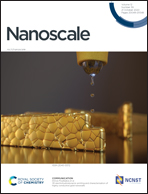The phase-change evolution from surface to bulk of MnO anodes upon cycling†
Abstract
Transition-metal oxides with low valence states are promising candidates as anodes for advanced rechargeable Li-ion batteries. Surprisingly, the capacities of such anode materials initially decrease and then increase after long-term cycling. Herein, MnO is selected as a representative material to study the structure–function relationship and elucidate the above-mentioned phenomena during long-term cycling. To this end, the surface reconstruction to bulk transformation of MnO anode materials during the cycling procedures has been revealed. The atomic scanning transmission electron microscopy images and theoretical modeling results illustrate the formation of stable surface-phase Mn3O4 and Li2MnO4, which promote the migration of Li ions. The complete bulk-phase transformation of MnO is then revealed, during which Mn2+ was found to be initially oxidized to Mn4+ and subsequently reduced to a mixed valence of Mn2+ and Mn3+, correlating with the tendency of their discharge capacity variation upon cycling. These direct atomic-scale observations of the migration behavior of Li ions in the MnO anode offer an essential step toward understanding the electrochemical performance evolution of transition-metal oxide anodes and guide the anode preparation for Li-ion batteries.



 Please wait while we load your content...
Please wait while we load your content...